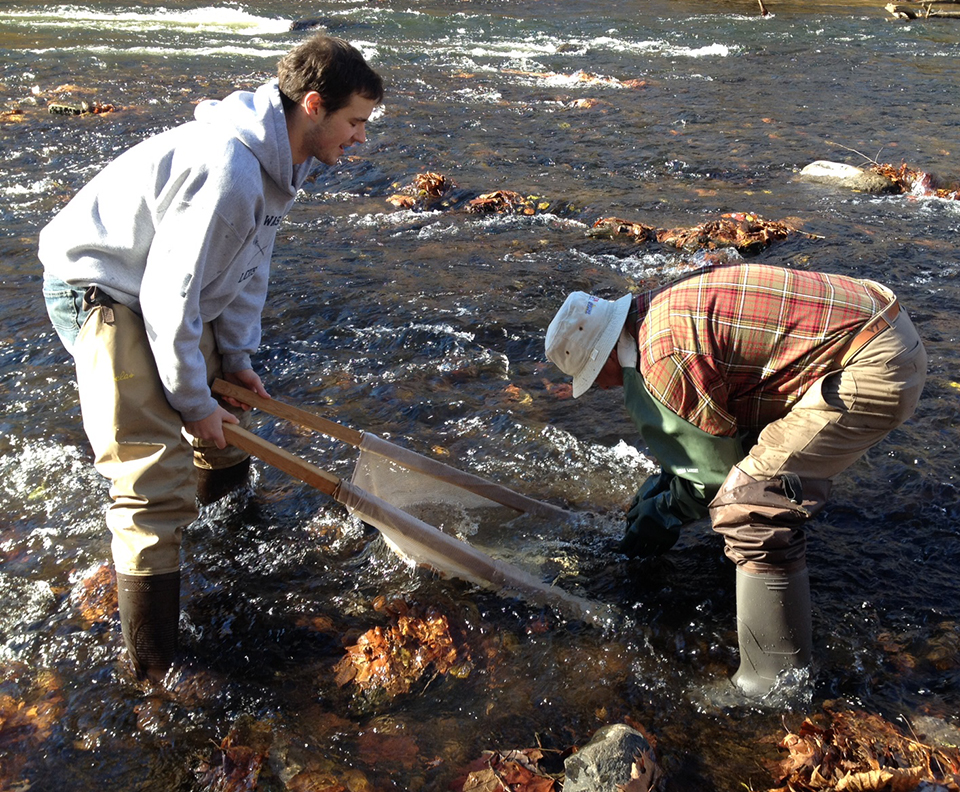RCA performs long-term monitoring at representative sites located throughout the Rivanna River watershed. RCA (formerly as StreamWatch) has been collecting data on the sites since 2003. In the map below, colored symbols show biological health at sites according to our most recent assessment. Click the symbols for site name and locality. You can read the most recent 2019 to 2021 Stream Health Report here.
Analysis of Long-term Benthic Trends in the Rivanna Watershed
With more than 15 years of benthic macroinvertebrate monitoring under our belts, RCA staff and our Science Advisory Committee recently evaluated long-term trends in the biological health of the Rivanna River and its tributaries.
Data from RCA’s 50 benthic monitoring sites were tested for statistically significant trends in stream health scores. The resulting report describes how the data were analyzed and presents results. Though this study did not evaluate what is causing the trends, of note are four sites with statistically significant improvements in stream health scores. All four sites are located downstream of large-scale water quality protection or improvement projects.

| Assessment Tier | Approximate Range of Scores | Meets/Fails Virginia Regulatory Standard | Narrative Description |
|---|---|---|---|
| Very Good | 70 and over | Meets | Natural or nearly natural biological conditions: the benthic macroinvertebrate community is diverse. Many types of organisms are present. The majority of the population is intolerant of human-caused stresses. |
| Good | 60-70 | Meets | Somewhat degraded: The community is diverse. Many types of organisms are present, but the number of types of sensitive organisms is somewhat reduced. The majority of the population is intolerant of human-caused stresses. |
| Fair | 40-60 | Fails | Moderately degraded: The community is fairly diverse. Many types of organisms are present, but the number of types of sensitive organisms is reduced. The majority of the population is tolerant of human-caused stresses. |
| Poor | 25-40 | Fails | Substantially degraded: The community is much less diverse. Fewer types of organisms are present, and the number of types of sensitive organisms is deeply reduced. The great majority of the population is tolerant of human-caused stresses. |
| Very Poor | 0-25 | Fails | Severely degraded: The community contains very few types of organisms, virtually all of which are tolerant of human-caused stresses. |
About Biological Monitoring
There are many ways to characterize stream conditions, including analysis of the physical and chemical properties of water, measurement of stream channel morphology, assessment of the landscape draining to the stream, and analysis of the community of organisms living in the stream. Over the course of the last decade, environmental managers have turned increasingly to benthic macroinvertebrate sampling as the method of choice for gauging the biotic integrity of streams. Benthic invertebrates (i.e. bottom-dwelling spineless critters) are responsive to environmental change and are excellent indicators of system stresses. Benthic assessment protocols are designed to measure a stream’s health in relation to natural streams. That is, they are designed to detect human-caused impairment. StreamWatch benthic data are collected and evaluated via two protocols. The first is the Virginia Save Our Streams modified method. The SOS modified method was developed at Virginia Tech and is the subject of published research that documents the protocol’s effectiveness as an assessment and monitoring tool. The second is the Adapted Stream Condition Index, a professional protocol developed by the Virginia Department of Environmental Quality and adapted by StreamWatch for our citizen monitoring efforts.

